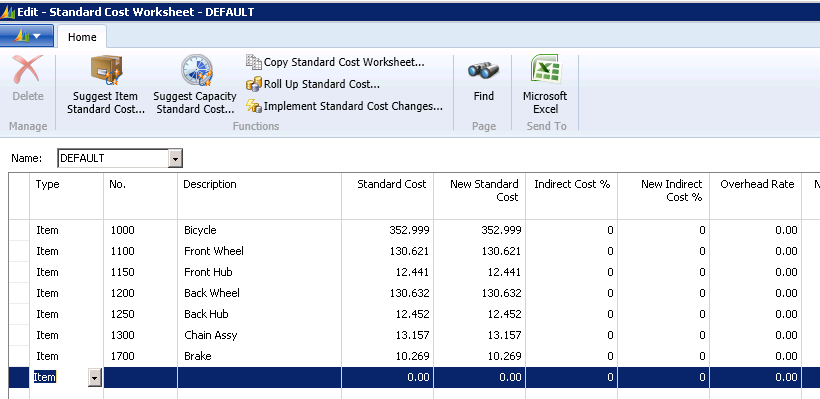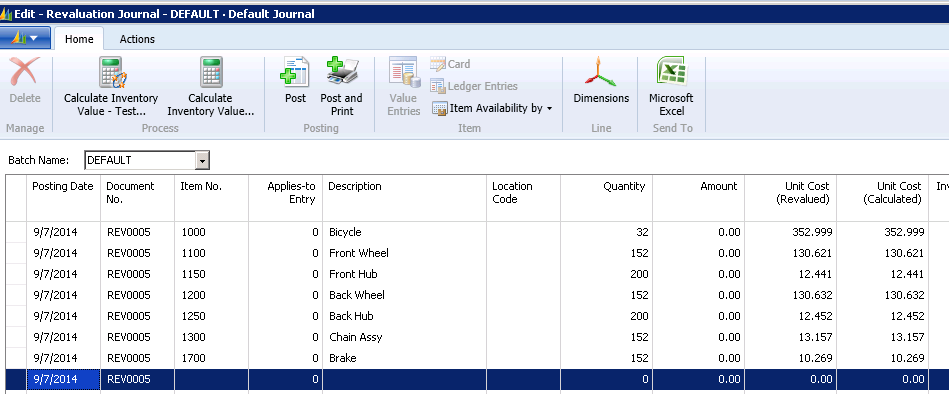Rolling Up Standard Costs in Microsoft Dynamics NAV

There are times when you may want to establish or reestablish Standard Cost for Items:
- For all new items
- When you find a significant mistake in the purchased item cost, the Production BOM, and/or the Routing and want to make a correction
- When there has been a significant change in the cost of raw materials
- When there is a significant change in the Production BOM
- When there are significant changes in the Production Process
- Fiscal Year End Rollup and Revaluation
In Dynamics NAV, we have two ways to roll up Standard Costs.
One way is from the Item Card itself:
Figure 1 – Rolling up Standard Costs from the Item Card
When we select “Calc. Standard Cost”, we get the options “Top Level” or “All Levels”:
Figure 2 – Calc. Standard Cost options – Top Level and All Levels
The other way is to use the Standard Cost worksheet. We can see that when we rolled up the Standard Cost for Item 1000, the system also included the lower level subassemblies for the Bicycle:
Figure 3 – Using the Standard Cost Worksheet
When you choose “Implement the Cost Changes”, the system automatically creates a Revaluation Journal. This Revaluation Journal inserts the necessary Value Entries to bring the Inventory Sub-Ledger into balance with the General Ledger:
Figure 4 – Choosing Implement Cost Changes will automatically create a Revaluation Journal
The reason why we always recommend using the Standard Cost Worksheet for Standard Cost Rollups as opposed to doing the Rollup from the Item Card is that the Revaluation Journal is not automatically created from the Item Card. This means that the user would have to remember to manually create the Revaluation Journal (which, in our experience, is not likely).
For some companies the common practice is to roll up the Standard Costs from the Item Card; however, most of the time the Inventory Sub Ledger was not in balance with the General Ledger. The good news is that, while it takes some thinking and work, we can get the Inventory Sub Ledger back into balance with the General Ledger.
For more information on this or other Microsoft Dynamics NAV topics, please contact ArcherPoint.
Read more “How To” blogs from ArcherPoint for practical advice on using Microsoft Dynamics NAV.




